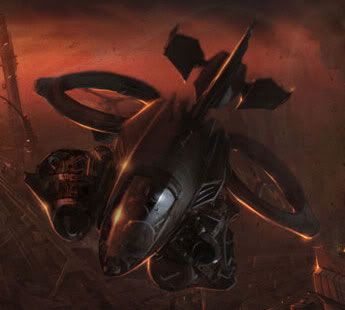
He who is skilled in attack flashes forth from the topmost heights of heaven.
StarCraft 2 encourages aggressive play. It’s why we see so many infantry rushes. But your foot soldiers are not the only weapons at your disposal if you want to bring the battle to a swift end. Not every player will agree, but the mid to upper echelons of the tech tree hold some very powerful tools – air units.
Air power quickly came to dominate the battlefield in the 20th century, and the battlefields of StarCraft 2 are not terribly different. Producing units that fly not only provides vital and rapid intelligence but often opens up options that might not normally be available with earlier technologies and forces. While every race has the means to carry out drop play, that is a subject for another post, as there are some general aspects of that tactic that apply to all races. In this article I wanted to discuss specific units from each race that can cause a major swing in momentum.
Zerg – The Mutalisk
One of the first mutations available to a Zerg player that spawns a Spire is that of the dreaded Mutalisk. It’s a versatile and relatively inexpensive flyer with good range, splash damage and the capability to target both air and ground units. As in the first StarCraft, even a small flight of Mutalisks can form the spine of a fearsome airborne Zerg swarm.
When accompianied by Zerglings or Banelings they are particularly resilient to return fire from the ground. They’re effective at harrassment and assaults on the enemy mineral line. Also worth considering is the fact that every moment your opponent spends chasing your Mutalisks or building anti-air defenses is one less moment they’re spending building units to attack you directly or counter a mixed ground assault. These are all uses for Mutalisk to consider as your Spire emerges from the creep.
Protoss – The Void Ray
Like all Protoss units the Void Ray is a lovely construct of sweeping curves and glimmering crystals. It is not, however, terribly fast and is somewhat fragile when it comes under focused enemy fire. This is balanced with its cost, its range of vision and the fact that the longer its beam is active, the more effective it becomes. At their apex they burn through buildings with frightening speed. Like the juggernaut, a well-managed flotilla of Void Rays may take a few moments to gather momentum, but once they do they are very hard to stop.
It is important, then, to ensure the Void Rays get where they’re going unmolested. Scouting routes, distracting the enemy’s units and feinting at their base entrance all increase the longevity of your flying glass cannons. Ideally, your opponent should not know that a dozen Void Rays are reducing their buildings to slag until the moment they turn their beams on the base. I’ve heard of some players who turn their Void Rays on each other just before making their assault. They switch targets at the right moment, of course, before destroying their own units, but this is something of an advanced technique. I’ll be the first to admit I don’t know much about it – I play Terran.
Terran – The Banshee
Bashees, unlike Mutalisks and Void Rays, cannot attack air units. Like Void Rays, they’re somewhat fragile. Like Mutalisks, they’re relatively inexpensive. However, what sets them apart from the other racial air units we’ve discussed is a seperate technology that must be researched: the Cloaking Device.
Invisible to all but detectors, Banshees with active cloaks are every bit as effective at harassment and mineral line assault as Mutalisks. They also shine in support of an infantry or tank advance, where they can surgically remove problematic units while the ground units soak up damage and push forward. As with Mutalisks, they can cause an opponent to scramble in building detectors or air defenses, allowing you to rapidly respond with a follow-up attack or a quick change in tactics.
Of course, all three races are vulnerable to early attack if they go for air tech early in the game. Base defense and proper build execution are crucial. However, if you can hold off initial rushes and keep your economy flowing, the power and versatility of these relatively basic air units may surprise you.



Leave a Reply